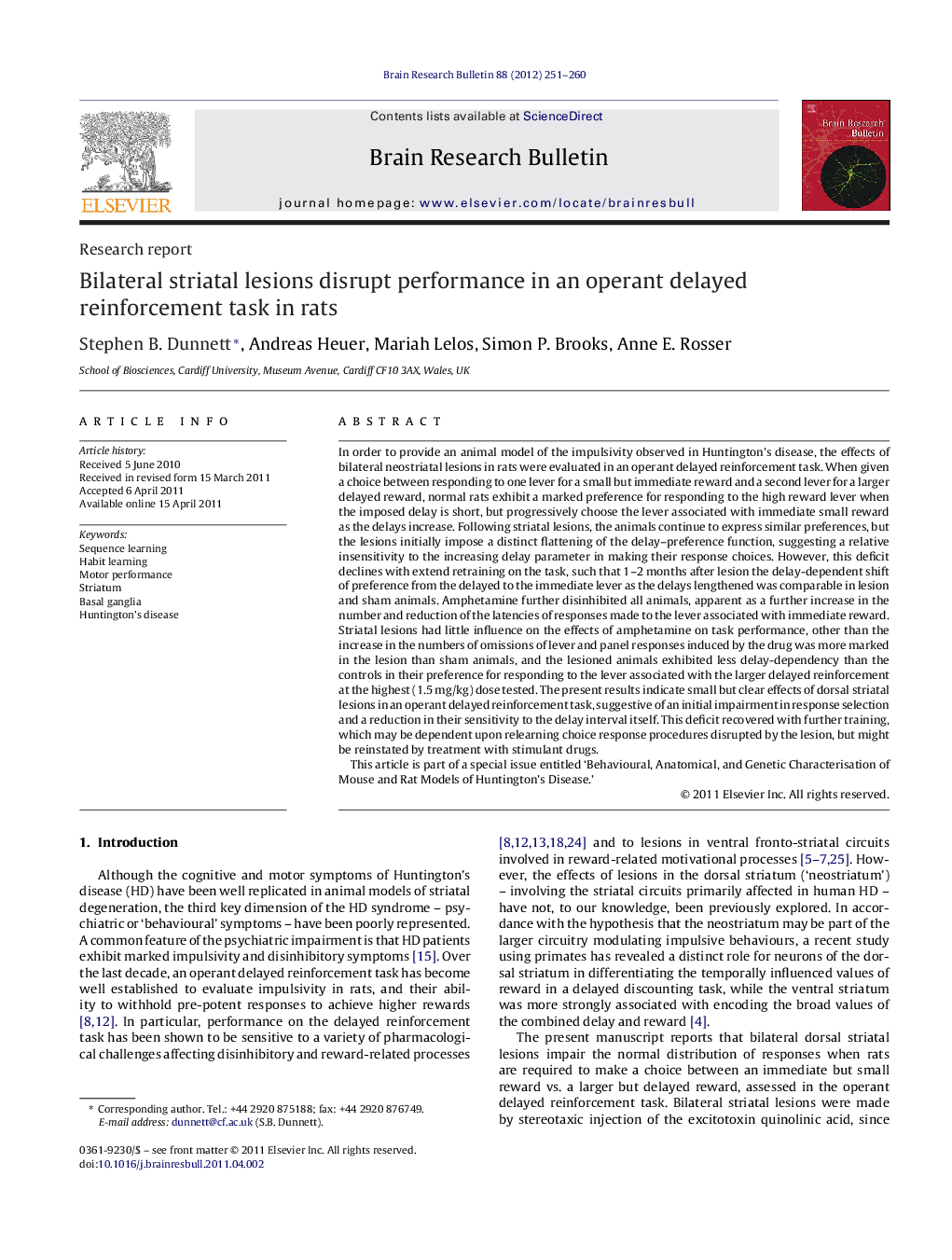| کد مقاله | کد نشریه | سال انتشار | مقاله انگلیسی | نسخه تمام متن |
|---|---|---|---|---|
| 4319084 | 1613269 | 2012 | 10 صفحه PDF | دانلود رایگان |

In order to provide an animal model of the impulsivity observed in Huntington's disease, the effects of bilateral neostriatal lesions in rats were evaluated in an operant delayed reinforcement task. When given a choice between responding to one lever for a small but immediate reward and a second lever for a larger delayed reward, normal rats exhibit a marked preference for responding to the high reward lever when the imposed delay is short, but progressively choose the lever associated with immediate small reward as the delays increase. Following striatal lesions, the animals continue to express similar preferences, but the lesions initially impose a distinct flattening of the delay–preference function, suggesting a relative insensitivity to the increasing delay parameter in making their response choices. However, this deficit declines with extend retraining on the task, such that 1–2 months after lesion the delay-dependent shift of preference from the delayed to the immediate lever as the delays lengthened was comparable in lesion and sham animals. Amphetamine further disinhibited all animals, apparent as a further increase in the number and reduction of the latencies of responses made to the lever associated with immediate reward. Striatal lesions had little influence on the effects of amphetamine on task performance, other than the increase in the numbers of omissions of lever and panel responses induced by the drug was more marked in the lesion than sham animals, and the lesioned animals exhibited less delay-dependency than the controls in their preference for responding to the lever associated with the larger delayed reinforcement at the highest (1.5 mg/kg) dose tested. The present results indicate small but clear effects of dorsal striatal lesions in an operant delayed reinforcement task, suggestive of an initial impairment in response selection and a reduction in their sensitivity to the delay interval itself. This deficit recovered with further training, which may be dependent upon relearning choice response procedures disrupted by the lesion, but might be reinstated by treatment with stimulant drugs.This article is part of a special issue entitled ‘Behavioural, Anatomical, and Genetic Characterisation of Mouse and Rat Models of Huntington's Disease.’
► Impaired striatal circuits may underlie the impulsive symptoms of Huntington's disease.
► We evaluate the effects of striatal lesions on rats’ performance of a delayed reinforcement task.
► Bilateral striatal lesions induce an initial flattening of delay discounting curves.
► The delay-dependent deficit recovers with re-training.
► Dorsal striatal lesions do not induce impulsivity but impair performance of motor skills and habits.
Journal: Brain Research Bulletin - Volume 88, Issues 2–3, 1 June 2012, Pages 251–260